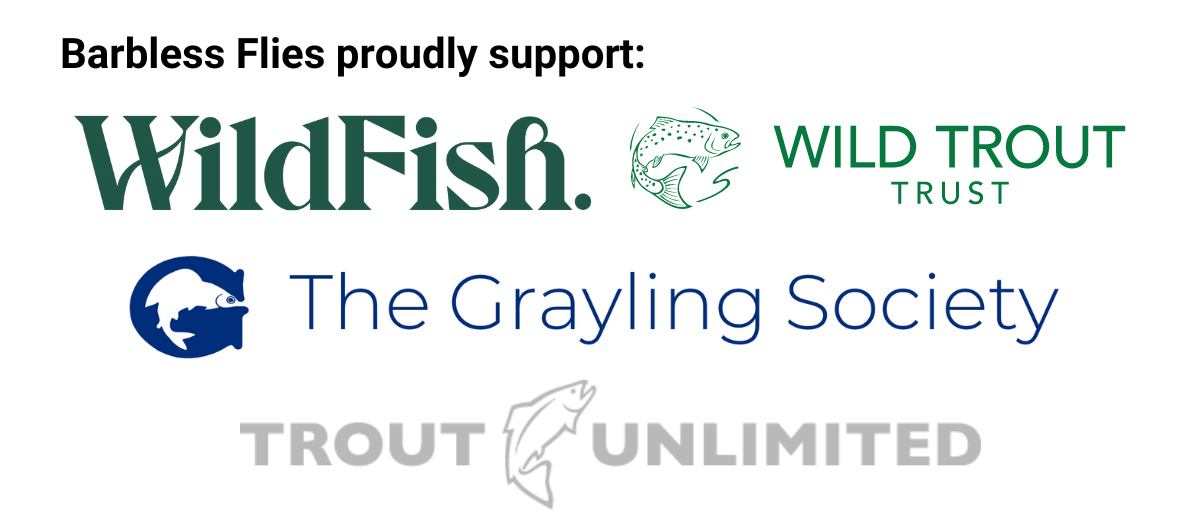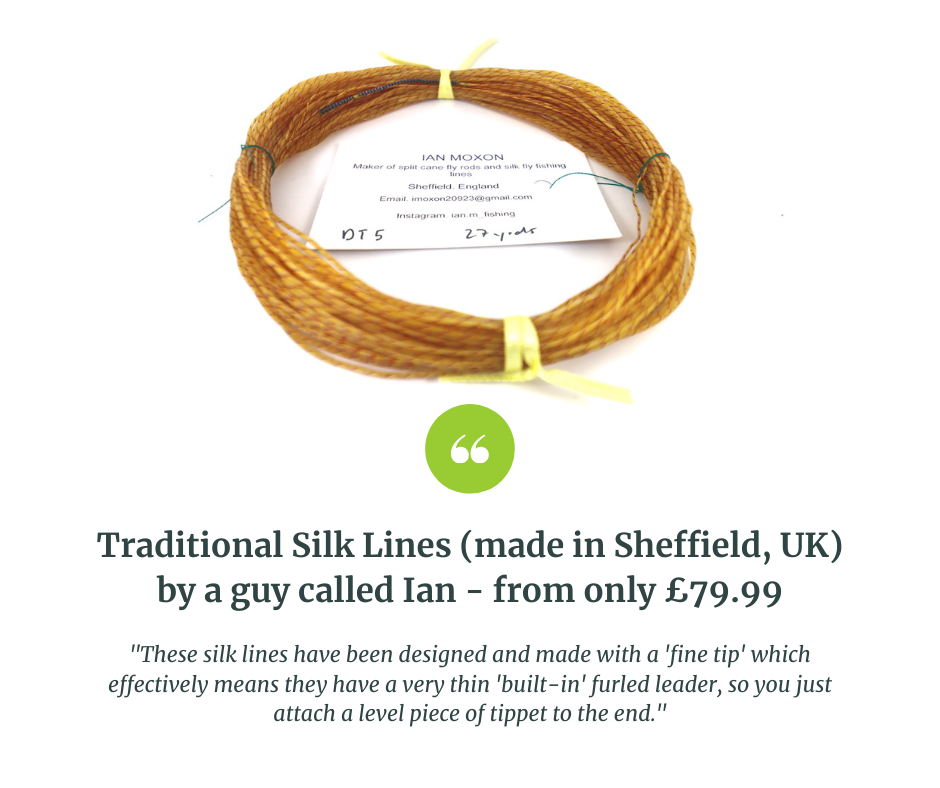Ethel, Pass me my glasses I can't see these buggers!

As the weather starts to warm up and the rivers drop to their summer low levels (with lower flows than normal), the fish generally tend to switch from the meaty Mayfly, to much smaller fayre.
This is where stealth, longer leaders and small flies come into play - take a look towards the end of this email for our Small Fly Manifesto and lots of hints and tips for fishing with small flies.
As we now approach the longest day of the year, it's fair to say that your best fishing will be towards the end of the day - early evenings through until dusk, or very early in the morning:
We have put together a selection of small flies - covering all of the major summer hatches, which all have pink yarn sighter posts. Ideal for those post-Mayfly sessions in the late evenings or early mornings.
Please Note: These sold out within hours last year, and here they are again, so you will need to be quick to grab yours:
Our "Easy To See" fly selection contains four Klinkhammer style patterns. They are a great general imitation of the smaller spring and summer up-winged flies. For more details on each of the flies in the selection (and some close-up photos, just click any button or image in this email).
We have created our "Easy To See" Selection for those late evening (or early morning) rises, they are all tied on barbless hooks in size 14 and 18. Four different patterns (two each of size 14 and 18) giving a total of 16 flies, priced at £20 (including free delivery).
Delicate Presentation? You Need Silk.
Ian Moxon - the silk line wizard from Sheffield has delivered us some really nice light silk lines - DT2 & DT3, both in a Light Straw colour. These are ideal for presenting very small flies like thistledown!
We now have both the 2wt and 3wt silk lines on offer - with a 20% discount, making them only £79.99 - how about that, a discount on a product which you actually need at this time of year!
NEW LIGHT-LINE STOCK JUST ARRIVED - Including some 'unfinished' silk lines

It's ok having small flies, but do you know how (and more importantly where) to use them? Small flies require thin tippet, thin tippet also requires a rod which will protect it, so a rod with a soft tip is ideal.
Degrease: Low summer rivers generally mean low flows, and in these, it's important when using small flies and thin tippets to de-grease at least the last 1ft of tippet.
Which Knot?: Practice the Davy Knot to tie small flies onto tippet. This knot leaves less bulk at the head of the fly, especially important when using small flies.
Where's My Fly: Don't worry if you cannot see your fly once you have cast it, so long as you have a rough idea where it is just lift the rod tip if you think the rise was close to your fly. Alternatively, you can always go for the "Double Dry" and fish a more visible fly with your small fly tied as a dropper.
Where To Fish Them: Look for cover - During the day fish will always head for cover, that means you will need to fish tight to the far bank and under trees, bushes etc. Practise your Bow and Arrow casting before you get to the river, this cast will come in really handy at this time of year.
It's All About Timing: Trout will generally sip small flies from the surface fairly regularly, so watch the water and time the rises. It's thought that trout will take quite a few small flies and then retreat to the river bed. Try to cast the fly to as close a point as possible to the rising trout, the more accurate the better. The more your fly has chance to drift, the more chance of drag.
Go Small or go home - If there is hardly any flow on the river and it's really low. I would always start with something "small and black", a size 18 or 20 Griffith's Gnat is as good a fly as any to start with. Start with a 9ft tapered leader and add 2ft or 3ft of tippet then your fly.
TOP TIP No1: If you struggle to thread small flies, make up some pre-tied at home, just tie each fly to an 18" length of tippet, then you can just water knot the tippet to your leader and you're ready to go again.
TOP TIP No2: If you struggle to thread your tippet through the eye of a small fly, try cutting your tippet at a 45-degree angle, this makes it much easier the thread through the eyes on really small hooks.
All of the above tips - and much much more, can be found in our Small Fly Manifesto ...

Our Small Fy Manifesto walks you through the setup for using small flies, from rods, reels and lines to flies (via leader design - which is a topic in its own right!). We have also included some popular leader designs that you can tie up yourself]...
We would like to introduce our 'Small Fly Manifesto' a handy hints and tips sheet walking you through the tackle and techniques used for fishing with small flies:
Tight lines & have fun










